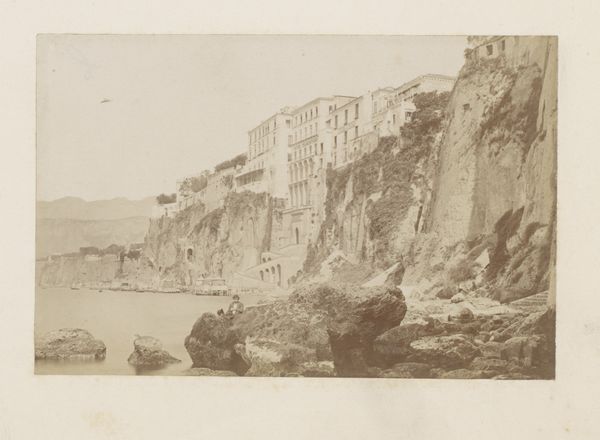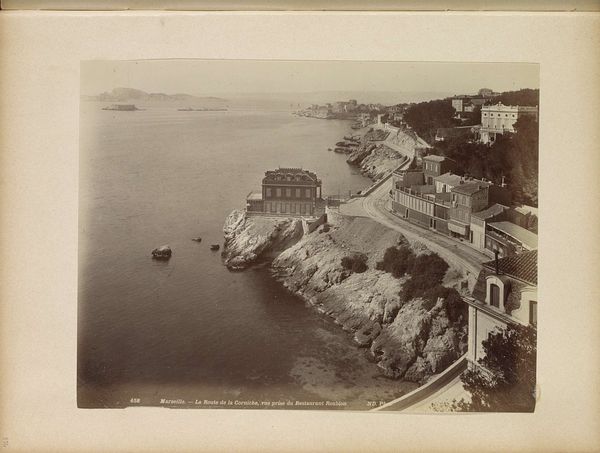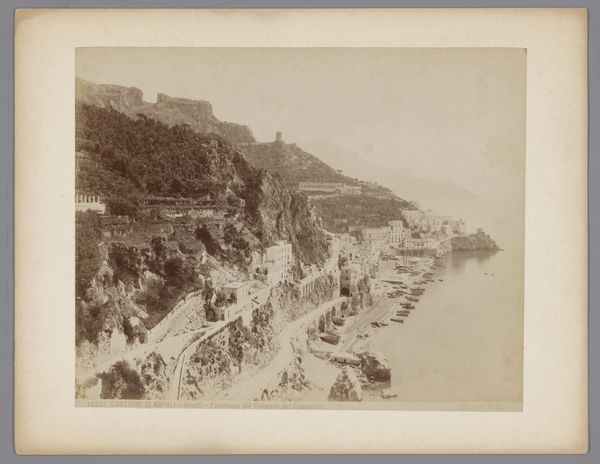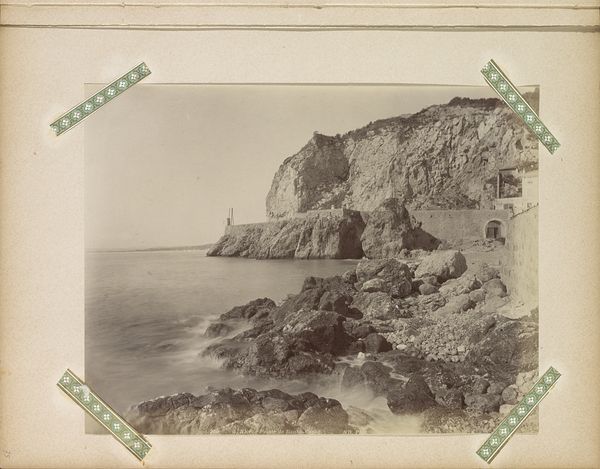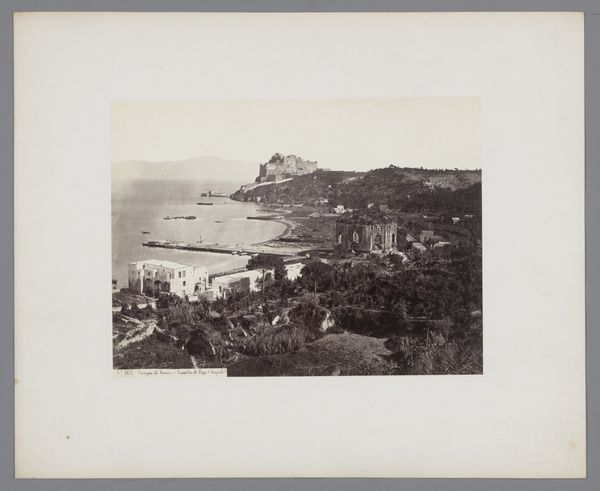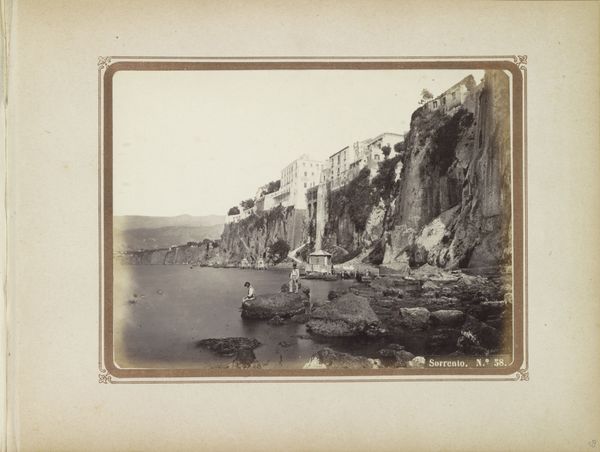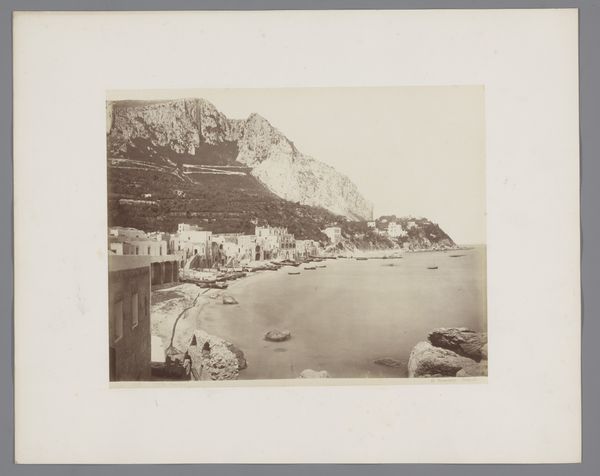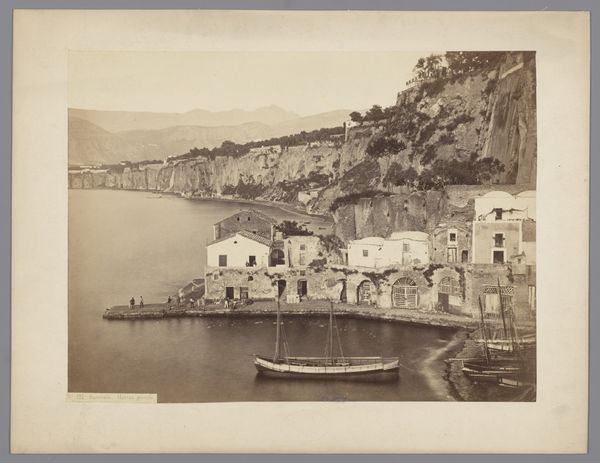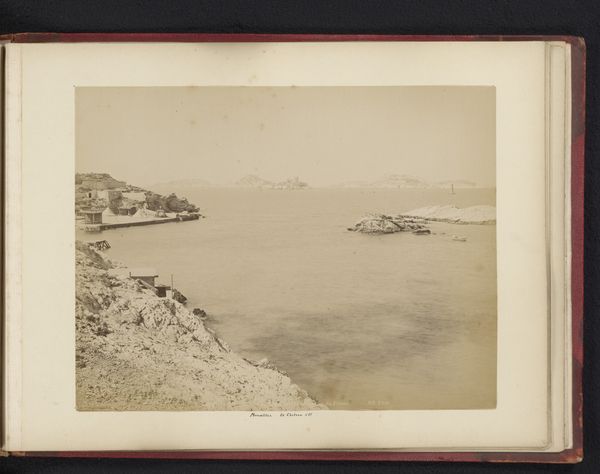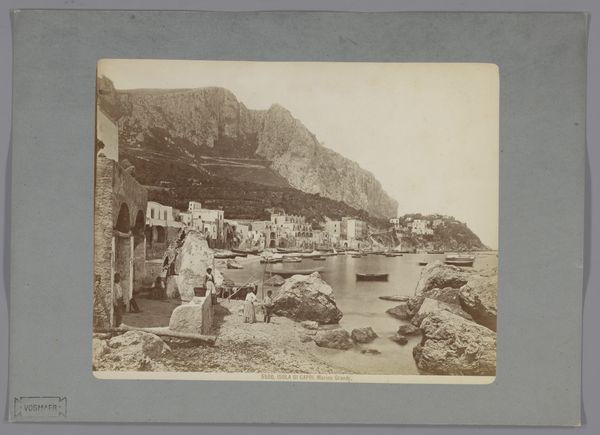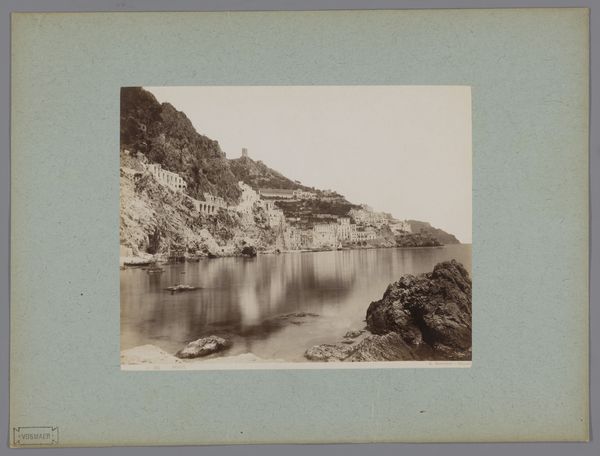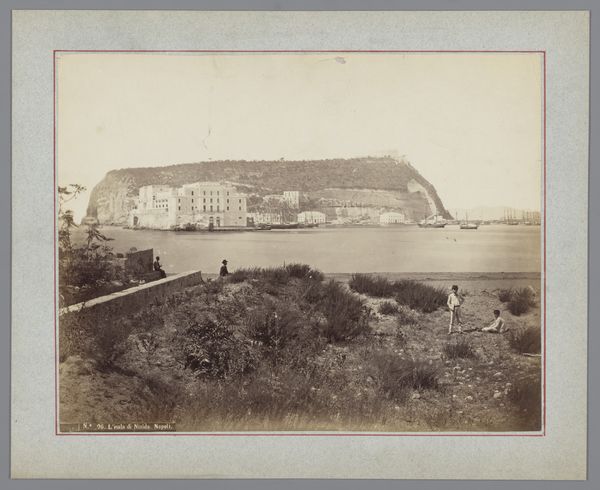
Gezicht op de muren van Château d'If voor de kust van Marseille c. 1880 - 1900
0:00
0:00
photography, albumen-print
#
pictorialism
#
landscape
#
photography
#
cityscape
#
albumen-print
#
realism
Dimensions: height 119 mm, width 184 mm
Copyright: Rijks Museum: Open Domain
Curator: What a wonderfully evocative albumen print. This photograph, titled "Gezicht op de muren van Château d'If voor de kust van Marseille," or "View of the Walls of the Château d'If off the Coast of Marseille," is attributed to Étienne Neurdein, taken sometime between 1880 and 1900. Editor: It’s…stark. The pale tones give it an almost dreamlike quality, but the fortress itself exudes this somber, impenetrable presence. I'm immediately struck by the weight of that structure and the isolating effect of the sea. Curator: Indeed. The Château d'If has quite the symbolic weight. Built in the 16th century, it served primarily as a prison. It became ingrained in the public consciousness through Alexandre Dumas' "The Count of Monte Cristo." This photograph comes at a time of burgeoning tourism centered around literary locations, so there's a direct connection here between the site’s political past and its growing cultural significance. Editor: That explains the imposing architecture. The symbols of confinement are hard to miss: the thick, sheer walls, those barred windows almost at sea level. The lack of human figures intensifies the sense of isolation, a lonely sentinel in the vastness of the ocean. Curator: Precisely. And the decision to capture the scene in soft focus, typical of Pictorialism, adds another layer of interpretation. Rather than documenting reality with crystal clarity, Neurdein evokes an atmosphere and invites the viewer to contemplate the fortress’s layered meanings – prison, historical monument, literary symbol. It reflects a conscious artistic choice beyond pure documentation. Editor: I agree. The overall sepia tone reinforces a sense of history and even nostalgia. Despite the grim reality of its original function, the image carries a romantic melancholy. You almost forget this was once a place of suffering, transformed through art and story into something strangely beautiful, even iconic. Curator: Ultimately, Neurdein gives us not just a view, but a carefully constructed image reflecting the Château d'If’s multifaceted role in the French historical imagination. It's an enduring, potent symbol. Editor: Absolutely, it speaks to the enduring power of symbols—how physical structures can carry narratives of oppression, resilience, and ultimately, transformation. It lingers in the mind long after you’ve turned away.
Comments
No comments
Be the first to comment and join the conversation on the ultimate creative platform.
